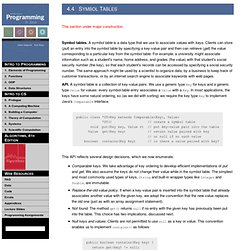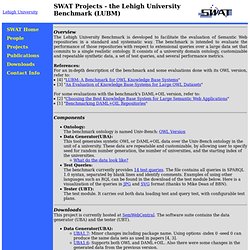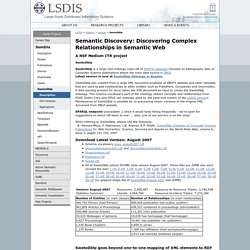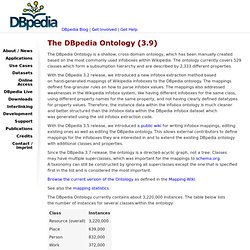

InvertedIndex.java. Symbol Tables. This section under major construction.

Symbol tables. A symbol table is a data type that we use to associate values with keys. Clients can store (put) an entry into the symbol table by specifying a key-value pair and then can retrieve (get) the value corresponding to a particular key from the symbol table. For example, a university might associate information such as a student's name, home address, and grades (the value) with that student's social security number (the key), so that each student's records can be accessed by specifying a social security number.
The same approach might be used by a scientist to organize data, by a business to keep track of customer transactions, or by an internet search engine to associate keywords with web pages. A symbol table is a collection of key-value pairs. This API reflects several design decisions, which we now enumerate: Comparable keys. Symbol table clients. We consider two prototypical examples. Resource Description Framework (RDF): Concepts and Abstract Syntax. University Benchmark (LUBM) Overview The Lehigh University Benchmark is developed to facilitate the evaluation of Semantic Web repositories in a standard and systematic way.

The benchmark is intended to evaluate the performance of those repositories with respect to extensional queries over a large data set that commits to a single realistic ontology. It consists of a university domain ontology, customizable and repeatable synthetic data, a set of test queries, and several performance metrics. References: For an in-depth description of the benchmark and some evaluations done with its OWL version, refer to: [4] "LUBM: A Benchmark for OWL Knowledge Base Systems" [3] "An Evaluation of Knowledge Base Systems for Large OWL Datasets"For some evaluations with the benchmark's DAML+OIL version, refer to: [2] "Choosing the Best Knowledge Base System for Large Semantic Web Applications" [1] "Benchmarking DAML+OIL Repositories" Components Downloads This project is currently hosted at SemWebCentral.
Documentation Others Contact. LSDIS : SwetoDblp. A NSF Medium ITR project SwetoDblp SwetoDblp is a large-size ontology (spin-off of SWETO ontology) focused on bibliography data of Computer Science publications where the main data source is DBLP.Latest version is now at SwetoDblp Ontology in Knoesis SwetoDblp was created from a large XML document available at DBLP's website and other datasets that are used to add relationships to other entities such as Publishers, Companies and Universities.

Jena - Welcome to Jena. Apache log4j 1.2 - Short introduction to log4j. Log4j has three main components: loggers, appenders and layouts.

These three types of components work together to enable developers to log messages according to message type and level, and to control at runtime how these messages are formatted and where they are reported. Logger hierarchy The first and foremost advantage of any logging API over plain System.out.println resides in its ability to disable certain log statements while allowing others to print unhindered.
This capability assumes that the logging space, that is, the space of all possible logging statements, is categorized according to some developer-chosen criteria. Complete beginner's guide to starting a Jena project in Eclipse. A complete beginner's guide to starting a Jena project in Eclipse I fairly often get email of the following form: Dear Mr/Dr/Professor Dickinson I am Jena newbie.

I can't attach the jena to eclipse. could you please give me help to resolve this problem. I'm not a prof, by the way, but it's flattering to be promoted! So this article is for all those who are new to Jena and Eclipse. A Java programming tutorial Instructions for installing Eclipse A comprehensive Jena tutorial Instead, my goals for this article are to show you how get the most basic possible Jena program set up in Eclipse. Preamble Jena is a programmer's API (application programming interface) for Java semantic web applications. Prerequisites. DBpedia - Wikipedia Data Extraction: SCM. Name. Downloads 37. This pages provides downloads of the DBpedia datasets.

The DBpedia datasets are licensed under the terms of the Creative Commons Attribution-ShareAlike License and the GNU Free Documentation License. The downloads are provided as N-Triples and N-Quads, where the N-Quads version contains additional provenance information for each statement. All files are bz2 packed. DBpedia Ontology The DBpedia ontology in OWL. Our JWS paper for more details. Ontology Infobox Types Contains triples of the form $object rdf:type $class from the ontology-based extraction. Ontology. The DBpedia Ontology is a shallow, cross-domain ontology, which has been manually created based on the most commonly used infoboxes within Wikipedia.

The ontology currently covers 529 classes which form a subsumption hierarchy and are described by 2,333 different properties. With the DBpedia 3.2 release, we introduced a new infobox extraction method based on hand-generated mappings of Wikipedia infoboxes to the DBpedia ontology. The mappings defined fine-granular rules on how to parse infobox values. The mappings also addressed weaknesses in the Wikipedia infobox system, like having different infoboxes for the same class, using different property names for the same property, and not having clearly defined datatypes for property values. Therefore, the instance data within the infobox ontology is much cleaner and better structured than the infobox data within the DBpedia infobox dataset which was generated using the old infobox extraction code.